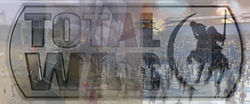Difference between revisions of "Maneuver warfare"
CoconutFred (talk | contribs) (added more info.) |
m (Quick-adding category "Total War Series" (using HotCat)) |
||
| Line 32: | Line 32: | ||
== See Also == | == See Also == | ||
*[[Rush]] | *[[Rush]] | ||
| + | |||
| + | [[Category:Total War Series]] | ||
Revision as of 01:58, 4 January 2011
Maneuver warfare, or manoeuvre warfare, is the term used to describe a concept of warfare that advocates attempting to defeat an adversary by incapacitating their decision-making through shock and disruption brought about by movement. In other words, belligerents attempt to gain a tactical advantage through group flanking and forcing their opponents to take the defence.
A Rush is a form of maneuver warfare, and the term maneuver war refers to a stage in melee battles where belligerents must move to gain favorable ground or a positional advantage.
Details
Maneuver warfare is often regarded as the opposite of attrition warfare; in a battle of attrition, large bodies of men are used to wear the enemy down gradually, while battles adhering to the doctrine of maneuver warfare are often decided very quickly; separate mobile contingents of men, usually grouped, move very quickly to points of interest in order to gain a tactical advantage over the enemy. While attrition armies manily consist of infantry or ranged units, more mobile armies adapted for maneuvering often include cavalry to strike into weak points, mobile infantry to hold up adversaries in order for successful flanking, and sometimes ranged cavalry to harass the rear of enemy armies.
History in Total War
Tactics of maneuvering and rushing have existed since Total War's beginnings in Shogun: Total War. Most battlemaps in Shogun were varied with different terrain, and the deployment zones for players did not stretch all the way across the map, and so rushes developed to seize favorable terrain once deployment ended.
The arguably overpowered nature of cavalry in Rome: Total War and Medieval II: Total War allowed for full-on frontal assaults against enemy armored formations. Knights and cataphracts in particular could overwhelm the very troops designed to stop them. In fact, a cataphract unit could engage the front of a pike phalanx formation and win. This made rush tactics all the more deadly when used on the offense.
Doctrine
According to the United States Marine Corps, one key concept of maneuver warfare is that maneuver is traditionally thought of as the use of maneuver so as to gain positional advantage. The US Marine concept of maneuver however is a "warfighting philosophy that seeks to shatter the enemy’s cohesion through a variety of rapid, focused, and unexpected actions which create a turbulent and rapidly deteriorating situation with which the enemy cannot cope."
Fundamentals
A player utilizing maneuver warfare must realize that it is not without faults or weaknesses, and so must be prepared to fulfill the following:
- Constant monitoring of the battlefield. During large-scale movements of bodies of troops, the player must always monitor the entire map to ensure the success of a flanking maneuver. When seen from the point of the defender, monitoring of enemy movements is necessary. The attacker might be attempting to provoke a counterattack and lure the defender into a trap.
- Flat maps maximize the effectiveness of maneuver warfare. Forests, hills, and cliffs hinder movements and provide choke points for a turtling player.
- Efficiency is key. All maneuvers must be quick, speedy, and clean. Particularly in the gunpowder-based games, where the Warscape code base prevents any unit from following attack orders if one man out of 120 is stuck on a fence. Time spent moving is time for opponents to catch wind of any deception operations.
Variations
- A Rush is an all-in fast attack or preemptive strike intended to overwhelm an unprepared opponent. It is a major component of maneuver warfare derived from the use of an attack to psycholgocally cripple an enemy.
- A Shock tactic is an offensive maneuver which attempts to place the enemy under psychological pressure by a rapid and fully committed advance with the aim of causing their soldiers to retreat. The acceptance of a higher degree of risk in order to attain a decisive result is intrinsic to shock actions. In essence, it is a counterrush.
